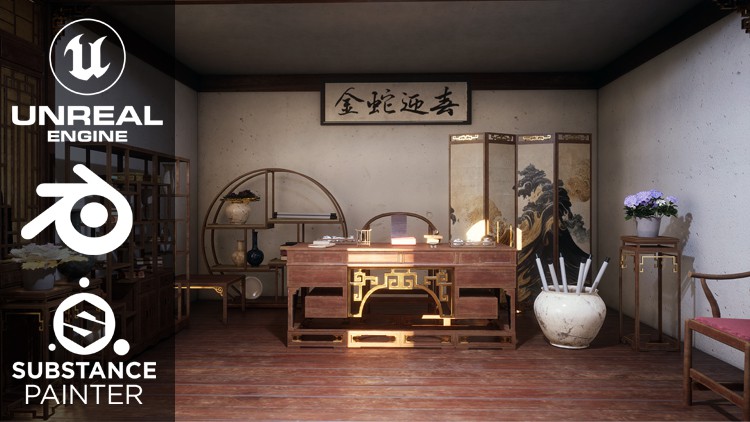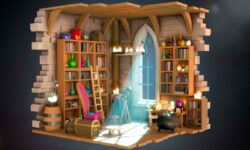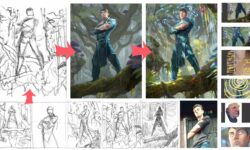Creating a Traditional Chinese Room Environment in Unreal Engine 5 by Aniket Rawat
Release date:2023, May
Duration:10 h 54 m
Author:Aniket Rawat
Skill level:Beginner
Language:English
Exercise files:Yes
Hello! It sounds like you have an exciting course lined up for creating a Traditional Chinese Room Environment using Unreal Engine 5, Blender, and Substance Painter. The combination of these powerful tools will allow learners to explore the process of modeling, texturing, and setting up a scene with lighting and materials.
With 33 full HD video lectures and over 11+ hours of content accompanied by audio commentary, participants can expect a comprehensive learning experience. The inclusion of all relevant files, such as .blend files, Unreal project files, Substance files, reference images, and textures, ensures that learners have everything they need to follow along and practice the techniques taught in the course.
By covering the entire process from modeling in Blender to texturing in Substance Painter and finally setting up the scene, lighting, and materials in Unreal Engine 5, learners will gain a well-rounded understanding of creating a Traditional Chinese Room Environment.
I hope your course is a great success and provides valuable knowledge and skills to all the participants!
This course seems like a comprehensive and hands-on learning experience for creating a Traditional Chinese Room Environment using Blender, Substance Painter, and Unreal Engine 5. The course covers the entire process, providing over 11 hours of content with audio commentary.
The course starts by gathering reference images and organizing them in Pure Ref to establish the mood and ideas for the scene. Then, it moves on to Blender for modeling the main assets such as the Writing Table, Chairs, Shelfs, and other props. The modeling process is thoroughly covered in Blender.
After modeling, the course covers UV unwrapping and exporting the assets to Substance Painter for texturing. Participants will learn to create high-quality and realistic materials using Substance Painter’s features such as Smart Masks, generators, and smart materials.
Next, the models and textures are imported into Unreal Engine, where the scene setup takes place. Lighting is a key aspect, and the course explores the new features of Unreal Engine, including Lumen, for achieving realistic lighting and creating the desired mood and atmosphere. The use of a Post-Processing volume further enhances the scene’s visuals.
The course also includes creating additional small props like Vases, Lamps, and Tea Pots to add more detail to the environment. Finally, props from Quixel Megascans are incorporated, and different camera angles are set up for capturing high-resolution screenshots.
This course is suitable for students who already have basic knowledge of modeling and texturing and want to expand their skills by creating environments. While the course provides detailed explanations, prior familiarity with the software would be helpful for learners to make the most of the course content.
It sounds like an exciting and comprehensive learning opportunity for anyone interested in creating realistic environments using Blender, Substance Painter, and Unreal Engine 5. Good luck with your course!





 Channel
Channel






hi sir there was issu in [Udemy] Creating a Traditional Chinese Room Environment in Unreal Engine 5 by Aniket Rawat.7z.001.rar